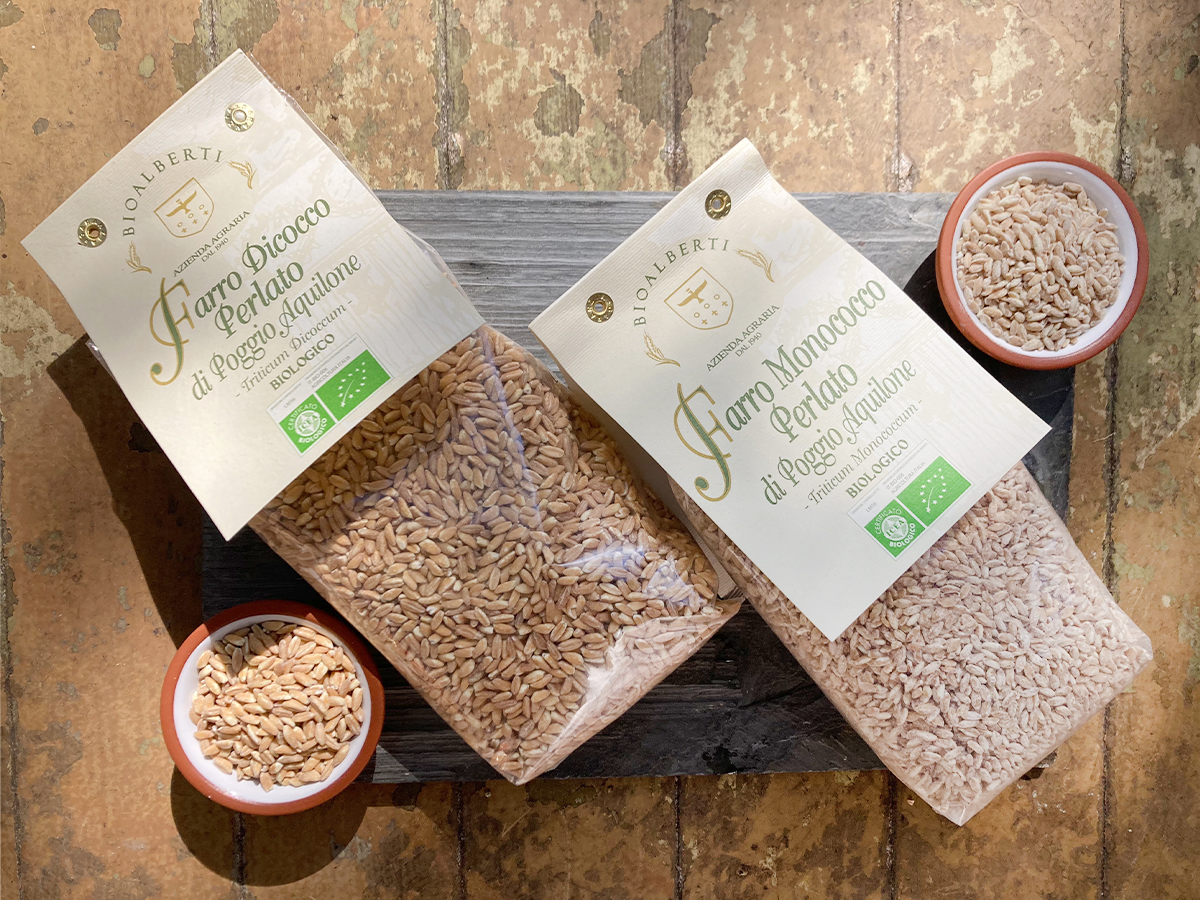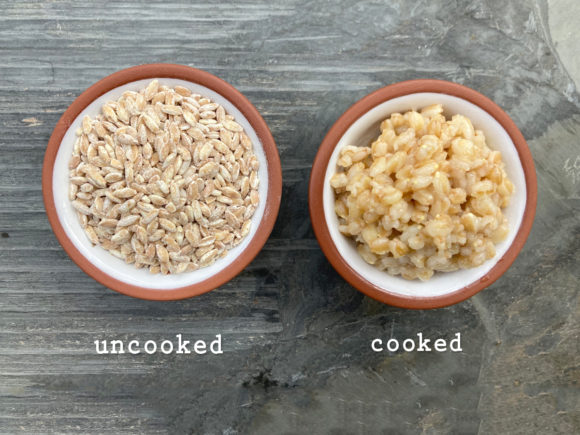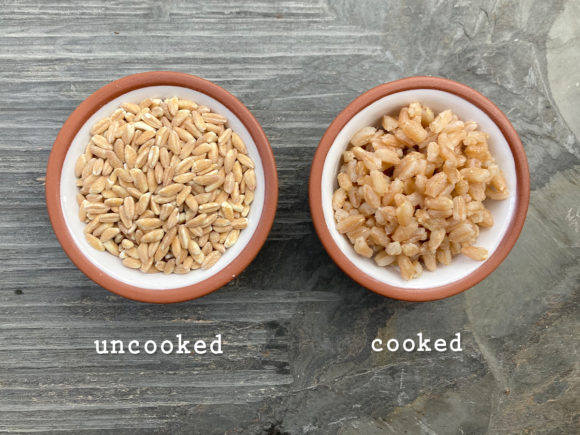Do you know your monoccocum from your dicoccum? Our farros are ancient grains with ancient sounding names, because these varieties have been around for millennia. Farro is the oldest cereal in the world, it’s been around for at least 20,000 years! Evidence of this grain has even been found inside the tombs of Egyptian royalty. Yep, the Pharaohs ate farro, as did the ancient Roman army. Modern Italians love this superfood too, it’s excellent in soup, salad, or as a side dish. Sweetened with honey, you can even have it for breakfast!
Both of our farros are “semi perlato”, which means part of the bran has been removed to reduce cooking time. To further pronounce their aromas, these grains benefit from a light toasting before being cooked. But let’s get into what distinguishes Umbrian producer Bio Alberti’s monoccocum from dicoccum:
FARRO MONOCCOCUM
-> Also known as small farro, spelt, einkorn, and enkir
-> “Mono” because each ear of the plant only contains one grain
-> Individual grains are small in size with a chewy texture and a nutty, earthy taste reminiscent of oats
FARRO DICOCCUM
-> Also known as triticum dicoccum, spelt, and emmer wheat
-> “Di” because each ear of the plant contains two grains
-> Larger in size than monoccocum, the grains are more separated once cooked with a creamier texture
We love both farros, you really can’t go wrong with any product from Bio Alberti Farm! The Alberti family is certified organic, and uses sustainable farming practices to ensure their land can continue to produce amazing grains, beans, peas, and lentils for generations to come.
Ready to get cooking? Check out our recipes featuring farro:
->Farro Salad by Domenica Cooks
->Summer Farro Salad Agrodolce
->Mark Bittman’s Modest Yet Gorgeous Farro
->Farrotto with Porcini
->Mediterranean Brisket with Sun Dried Tomatoes and Farro


